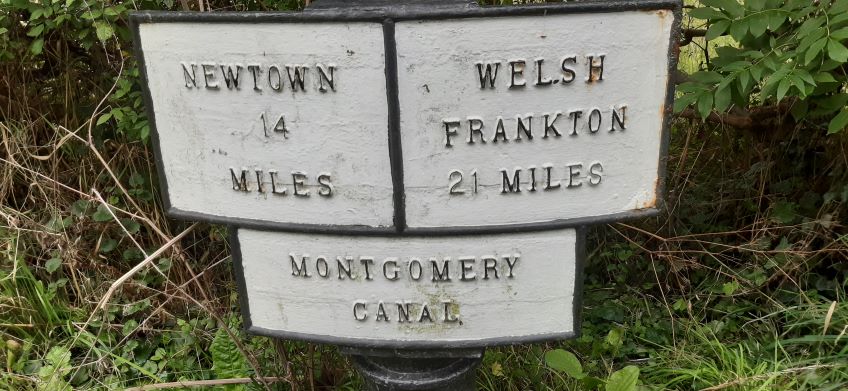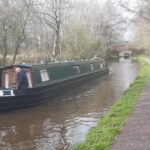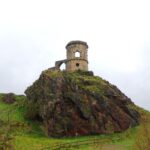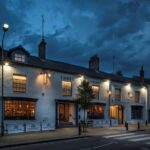“How far is it to Welshpool?” I asked this couple of walkers as they came striding towards us at quite a pace.
It was around 4pm and my trekking companion and poet, Peter Gibbs, and I had been walking along the Montgomery Canal since leaving Newtown at 9am that morning and, to tell you the truth, I was beginning to flag!
I was now really looking forward to reaching the historic Royal Oak coaching inn and hotel, where we were booked in for the night.
From there, we would be continuing on to complete this most scenic 35-mile walk, which first hugs the hills of mid-Wales, before moving forward into rural Shropshire to reach Welsh Frankton at its junction with the Llangollen Canal.
“So where have you two walked from?” asked Keith Wood, coming to a halt beside us, whereupon we fell into conversation, with Peter offering to read one of the poems he had been inspired to write along the way.
He was only a couple of verses into the piece, when the proverbial penny suddenly dropped!
“Wait a minute – we have met you before and already heard one of your poems,” said Keith’s partner, Jane.
It was quickly established that the couple had met Peter and his friend, Sue, the year before, when they were out walking along the sea wall near his home in the Victorian seaside town of Clevedon, in North Somerset.
So just what were the chances of that happening? We all wondered, especially as Keith and Jane lived in a small village near Shrewsbury.
Work on building the Montgomery Canal began in the 1790s and it was finally opened all the way to Newtown in 1819.
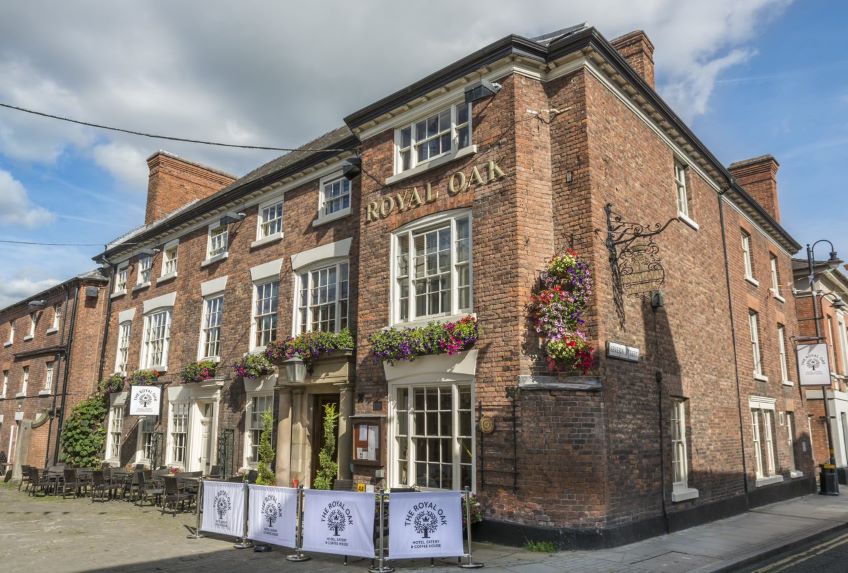
Most of the freight carried was local limestone and coal to be burnt in nearby kilns to provide fertiliser to improve the land after the Industrial Revolution, while other cargoes included timber, building stone and slates.
But the decline in agriculture in the second half of the 19th century, combined with a major breach near the River Perry, caused the canal to be finally closed by Act of Parliament in 1944, after which it began falling into a slow and gentle decay.
Had we been setting out on this walk from Newtown in the canal’s heydays, we would have encountered an extensive canal basin bustling with activity.
But as it was, we walked for quite a distance before coming across derelict Dolfor Lock and the first sad physical signs that the waterway had ever existed.
From here on, and for the next 27 miles, we were to play a game of hide and seek with the canal suddenly emerging from the watery undergrowth and then vanishing again.
There was something a little surreal about this experience because on those occasions, we would come upon a completely restored lock complex, seemingly in the middle of nowhere, where one might have expected a narrowboat to come chugging along at any moment.
But there were three important constants on this most memorable journey and they were an excellent towpath, well maintained by the Canal and River Trust, the highly- distinctive cast iron black and white mile markers and the now, mostly tired and faded, information boards.
These gave us a fascinating insight into the lives of the prominent industrialists of the day and all the activities that would have been going on around us at the time.
Brian, who served us our breakfast before we set out from The Royal Oak the following morning and often cycles along the canal, told us the sad story about a male swan, which flew off from his brood one morning and was later found dead in a field, having suffered a heart attack, as was later established.
We came upon the widowed swan and her “teenage” brood of eight cygnets a little further along the canal and Peter was inspired to pen a poem about their plight.
But they were not the first family we had met, because, the previous morning, we had come across, Syd and Gerti, and their fine brood of seven, which were the “pets” of an elderly lady, whose home was right beside the canal.
We did, however, come across an exception to there being no boating activity on “The Mont,” as it is affectionately known to the ardent preservationists.
These were two wide-bodied narrowboats, operated by a boating for the disabled charity, on one stretch of open water not far beyond Welshpool.
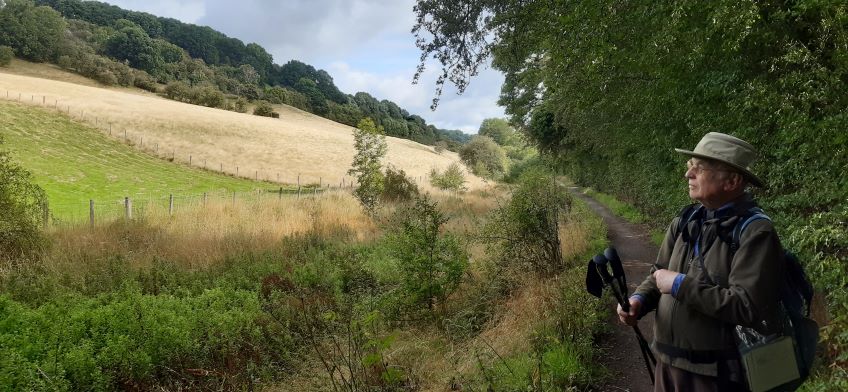
Doing battle with the invasive variety of vigorously growing and water-loving plants that are smothering “The Mont”, including Himalayan Balsam, is an ongoing battle for enthusiastic volunteer members of the canal preservation group.
It was around noon on our second day’s ten-mile trek from Welshpool to the small village of Llanymynech, where we were to overnight, that we came upon the aptly-named Paul Freshwater and his fellow enthusiasts about to employ a mechanical weed cutter.
Among their hardy adversaries is the fast-growing Water-soldier, which we later discovered had literally spread a bright green “carpet” across the canal from bank to bank.
This marching menace, banned in some parts of North America, was pointed out to us by Jenny Smith, who happened to pass by on a newly-constructed section of the towpath, where we had stopped for our picnic lunch.
Three years ago, this section of the canal had been completely clear before the water-soldier,marched in, she told us, as she pointed towards the watery menace, which I thought looked rather attractive or would have been in the right place.
We overnighted at the friendly Dolphin Inn in Llanymynech before setting off at 6.30am, taking croissants and coffee with us in order to complete the final 12 miles by lunchtime, when a taxi was due to collect us from The Narrow Boat pub in Welsh Frankton.
The first major sign that “The Mont” was being reclaimed from its past, appeared four miles into the walk with a brand-new road bridge, still under construction, not far beyond which, we finally reached the completely restored and reopened canal.
Peter and I have walked many of the UK’s wonderful network of canals over the years, and I can’t speak too highly of all the work put in by the Canal and River Trust and their thousands of volunteers, who work tirelessly to maintain the system for boaters, cyclists and we walkers to enjoy.
But I must admit to a suddenly feeling of anticlimax that our wonderfully scenic and wild walk out of the Welsh hills, had finally reached the end of its road.
Guidebook J.M Pearson’s Canal Companion, Welsh Waters, Shropshire Union, Llangollen, Brecon and Montgomery canals.
The Widow Swan
Her mate for life has passed away
Dead from heart attack
He flew away on one fine day
But never to come back
Now with her brood of cygnets
A most impressive eight
She keeps them closely by her side
And threats anticipates
We hope there is a single male
That romance has not flown
Until that time with family
She will not be alone.
Dolfor Lock
The lock long since abandoned
The waters no more flow
Gone the hardy boatmen
Who passed so long ago
The keeper’s cottage derelict
Its windows gaping wide
Poles of iron scaffolding
Bar the way inside
Canal that once so busy
Is now just filled with grass
A footpath overlooks the site
Where busy boats did pass
Beyond the trees the Severn
Heads towards the sea
There to meet its destiny
In far-off estuary.

